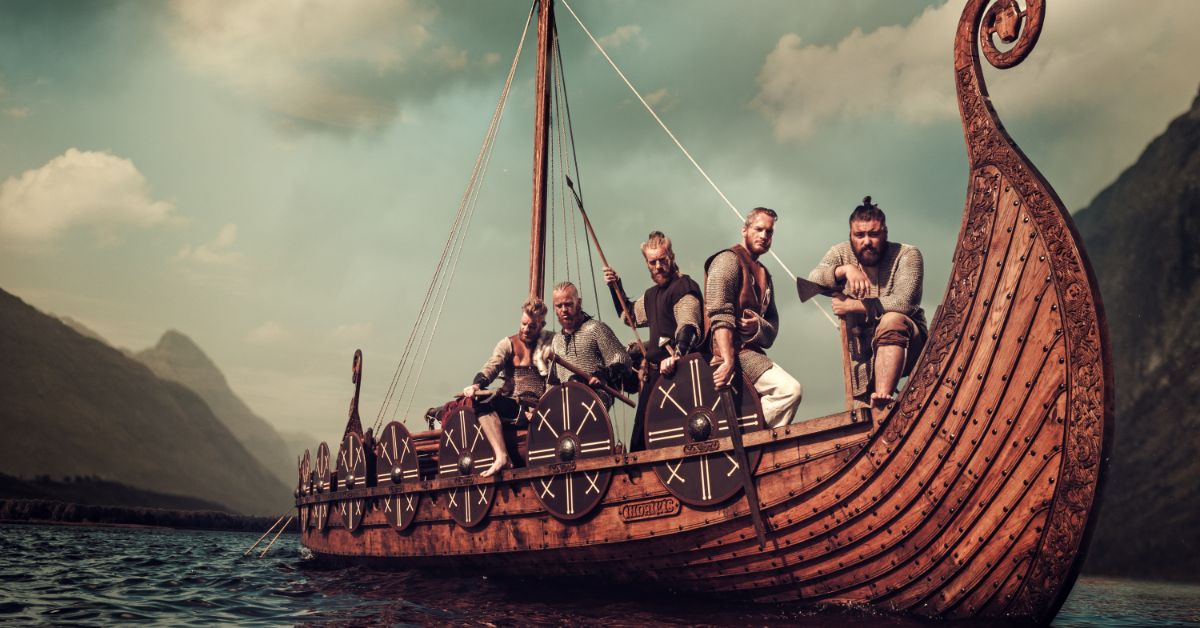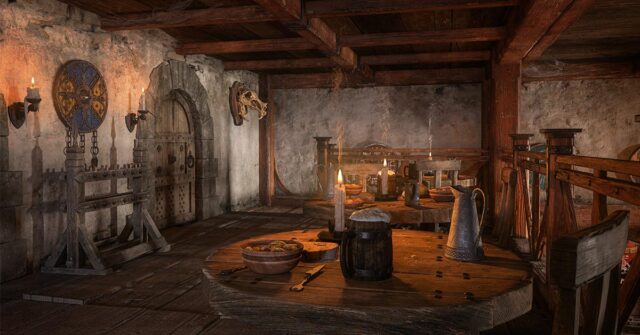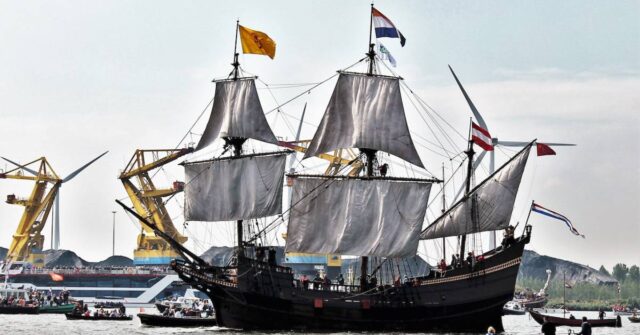The Vikings, seafaring people from the late eighth to early 11th century, were renowned for their shipbuilding techniques. Their ships were not only functional, aiding in trade, exploration, and warfare, but also beautifully crafted.
This blog post delves deep into the intricacies of Viking shipbuilding, exploring the materials, methods, and cultural significance of these impressive vessels.
Introduction
The Vikings, seafaring warriors from Scandinavia, were renowned for their shipbuilding skills. Their ships were not only means of transportation but also symbols of power and craftsmanship.
This article delves into the intricacies of Viking shipbuilding, exploring the history, design, materials, and cultural significance of these remarkable vessels.
Overview of Viking Shipbuilding
Viking shipbuilding was a sophisticated and well-developed skill, crucial to the success and expansion of the Viking Age. These ships were renowned for their speed, agility, and ability to navigate both open sea and shallow rivers.
Craftsmanship and artistry played significant roles in their construction, making them a subject of fascination even today.
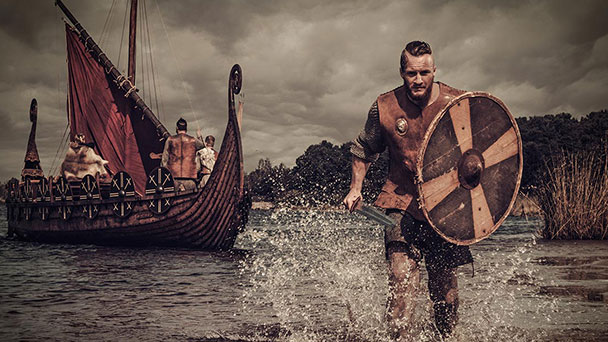

Significance in Historical Context
The Vikings used their ships to explore, trade, raid, and settle across a vast area, from the British Isles and Iceland to North America and the Mediterranean.
The ships allowed them to cover great distances quickly, facilitating the Viking Age’s rapid expansion and impact on medieval history.
Relevance and Popularity Today
Today, Viking ships continue to capture the imagination, with reconstructions and exhibits found in museums worldwide. They remain a symbol of the Viking Age, representing the craftsmanship, maritime skill, and adventurous spirit of the Vikings.
The Roots of Viking Shipbuilding
The tradition of shipbuilding in Scandinavia has ancient origins, influenced by the region’s geography and the seafaring needs of its people.
The Vikings inherited and refined these shipbuilding techniques, creating vessels unparalleled in speed, agility, and efficiency. Understanding the roots of Viking shipbuilding provides insight into their success and mastery over the sea.
Early Scandinavian Boatbuilding
The tradition of boatbuilding in Scandinavia dates back to the pre-Viking Age. Early Scandinavians developed skills in constructing small boats for fishing and transportation along the coast and rivers.
Over time, these skills evolved, setting the foundation for the advanced shipbuilding techniques of the Viking Age.
Development of Viking Ship Design
The Vikings refined and expanded upon these early boatbuilding techniques to create their iconic ships. They developed a clinker-built construction method, where planks overlapped each other, providing strength and flexibility.
This design was crucial for navigating the rough seas of the North Atlantic and the shallow rivers of Europe.
Influences from Other Cultures and Regions
As the Vikings traveled and traded across Europe, Asia, and the Middle East, they encountered various shipbuilding techniques and styles that influenced their designs.
This cross-cultural exchange led to improvements and refinements in Viking shipbuilding techniques, further enhancing their maritime capabilities.
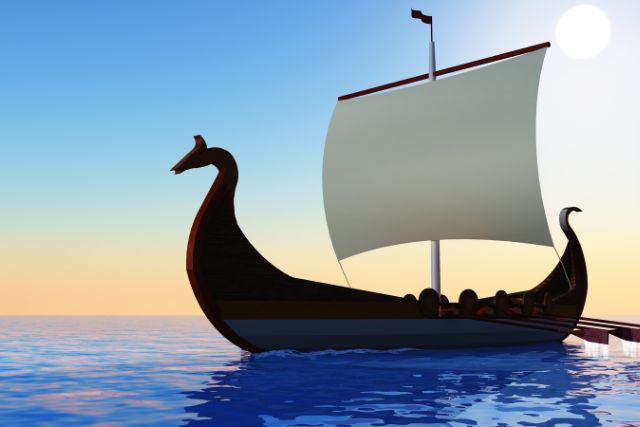

Design and Types of Viking Ships
The Vikings were master shipbuilders, with a diverse fleet of vessels designed for various purposes. From mighty longships used in warfare and exploration to sturdy knarrs for trade and transportation, each ship was a marvel of design and engineering.
This section explores the different types of Viking ships and their unique design features.
Common Characteristics of Viking Ships
Viking ships were primarily constructed from oak, known for its strength and durability. They featured a clinker-built design, with a shallow draft and symmetrical ends, allowing them to reverse direction quickly.
The ships also had a single mast with a square sail and oars for additional propulsion and maneuverability.
Different Types of Viking Ships
Viking ships came in many forms, each tailored to specific needs and purposes. The longship, with its slender, long design, was perfect for speed and agility, while the knarr, with its broader hull, was ideal for carrying cargo.
This variety in design highlights the Vikings’ versatility and innovation in shipbuilding.
Longships
Longships were the quintessential Viking vessels, designed for speed and agility. They were used in raids and warfare, able to carry warriors and their equipment over long distances.
The long, narrow design allowed them to navigate both open sea and shallow rivers.
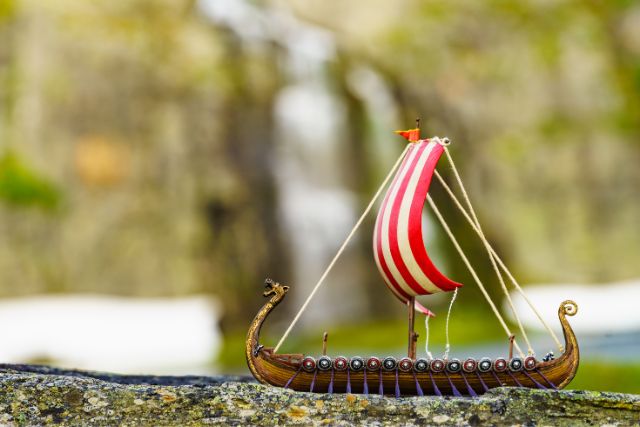

Knarrs
Knarrs were cargo ships, broader and shorter than longships. They were designed to carry heavy loads of goods and livestock, playing a crucial role in the Viking trade.
The wide hull provided stability, while the shallow draft allowed them to access ports and rivers.
Other Types of Viking Vessels
In addition to longships and knarrs, the Vikings built various other vessels for specific purposes, including fishing boats, small crafts for local transportation, and specialized warships.
Design for Specific Purposes
The Vikings were pragmatic shipbuilders, designing their vessels with specific purposes in mind. Whether it was for warfare, trade, or fishing, each ship was crafted to excel in its intended function.
This section examines how the Vikings’ design choices were influenced by the intended use of their ships.
War and Raiding
For war and raiding, the Vikings relied on longships, designed for speed, maneuverability, and the ability to launch surprise attacks.
These ships could carry a large number of warriors and their equipment, allowing the Vikings to strike quickly and efficiently.
Trade and Transportation
Knarrs were the workhorses of the Viking trade, designed to transport goods and livestock across long distances. Their stability and cargo capacity made them ideal for these purposes, facilitating the Vikings’ extensive trade network.
Fishing and Whaling
The Vikings also constructed smaller boats designed specifically for fishing and whaling. These boats were vital to the Vikings’ sustenance, providing a reliable food source.
Materials and Tools
The Vikings used a variety of materials and tools in shipbuilding, sourced from their natural surroundings. From oak timber for the hull to iron nails and woolen sails, each material was chosen for its properties and availability.
This section delves into the materials and tools used in Viking shipbuilding, shedding light on their resourcefulness and craftsmanship.
Types of Wood Used
Oak was the primary wood used in Viking shipbuilding due to its strength, durability, and availability in Scandinavia. Other types of wood, such as pine and ash, were also used for specific parts of the ship, such as oars and masts.
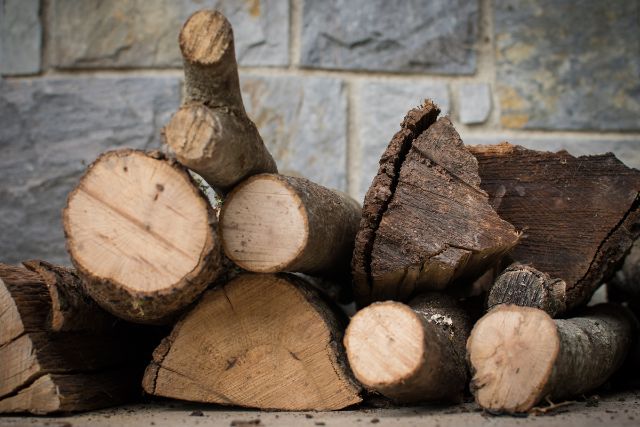

Iron and Other Materials
Iron was used for rivets, nails, and other fittings, providing strength and stability to the clinker-built structure. The Vikings also used tar for waterproofing, sourced from pine trees, and wool for caulking gaps between the planks.
Tools for Shipbuilding
The Vikings used a variety of hand tools for shipbuilding, including axes for shaping planks, hammers, nails for joining, and adzes for smoothing surfaces.
These tools required skill and precision, reflecting the high level of craftsmanship in Viking shipbuilding.
Construction Techniques
The construction of Viking ships was a meticulous process, involving various techniques passed down through generations. From clinker-building to the use of iron rivets, each technique played a crucial role in the durability and efficiency of the ships.
This section explores the construction techniques employed by the Vikings, highlighting their ingenuity and attention to detail.
Clinker Building Method
The clinker-building method involved overlapping planks, fastened together with iron rivets. This method provided strength and flexibility, allowing the ship to move with the waves.
The overlapping planks also helped to divert water, contributing to the ship’s seaworthiness.
Riveting and Joining
Rivets and iron nails were used to join the planks and other components of the ship. Precision was crucial in this process, as improper joining could compromise the ship’s integrity.
The Vikings developed advanced techniques for riveting and joining, ensuring the strength and durability of their ships.
Carving and Decoration
Carving and decoration were important aspects of Viking shipbuilding, reflecting the artistry and craftsmanship of the builders. Intricate carvings adorned the ships, often featuring mythical creatures and symbols.
These carvings not only served decorative purposes but also had cultural and religious significance.
Waterproofing and Maintenance
Tar was applied to the ship’s exterior for waterproofing, protecting the wood from the elements. Regular maintenance was required to keep the ships in good condition, including caulking, repairing damaged planks, and reapplying tar.
The Vikings took great care in maintaining their ships, ensuring their longevity and performance.
Sails, Rigging, and Navigation
The sails, rigging, and navigation equipment were vital components of Viking ships, enabling them to traverse vast distances and navigate challenging waters.
The Vikings’ knowledge of the wind, currents, and stars, combined with their shipbuilding skills, made them formidable seafarers. This section examines the various elements that contributed to the Vikings’ navigational expertise.
Design and Materials of Viking Sails
The sails of Viking ships were made from wool or linen, dyed with vibrant colors and often featuring intricate patterns. The square design allowed for efficient use of wind, propelling the ship forward.
The sails were a crucial component, providing the primary source of propulsion.
Rigging and Steering Mechanisms
The rigging of Viking ships was relatively simple, with a single mast and square sail. The ships were steered using a large oar mounted on the starboard side, requiring skill and strength.
The design of the rigging and steering mechanisms reflected the Vikings’ practical approach to shipbuilding, focusing on functionality and efficiency.
Navigation Techniques and Equipment
The Vikings were skilled navigators, relying on the sun, stars, and coastal landmarks to guide them. They also used rudimentary navigation tools, such as the sun compass and lead lines for measuring depth.
Their knowledge of currents, tides, and weather patterns played a crucial role in their navigational prowess.
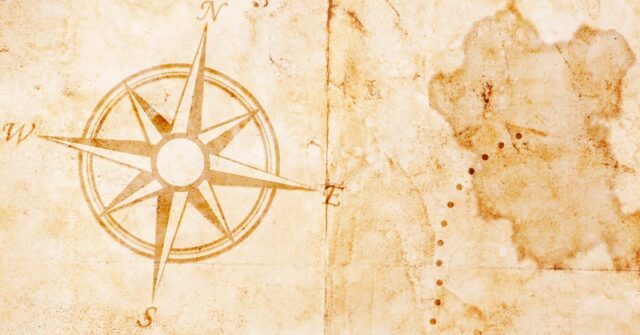

The Role of Viking Ships in Society
Viking ships played a central role in Viking society, serving as tools of war, trade, and exploration. They were also symbols of power, skill, and mobility.
Understanding the role of Viking ships in society provides insight into the Vikings’ way of life and their enduring legacy.
Shipbuilding as a Profession and Craft
Shipbuilding was a highly regarded profession in Viking society, reflecting the importance of ships in their daily lives and expeditions. Craftsmen passed down their skills through generations, ensuring the continuation of their shipbuilding traditions.
Symbolism and Cultural Significance
Viking ships held significant symbolic and cultural importance. They were not just tools for exploration and warfare; they were also symbols of power, prestige, and craftsmanship.
Ships played a central role in Viking art, mythology, and ritual, reflecting their deep connection to the sea.
Ships in Viking Burials and Rituals
Ships played a crucial role in Viking burials and rituals, believed to carry the deceased to the afterlife.
Burial ships, filled with goods, weapons, and sometimes even horses, have been uncovered in various Viking burial sites, providing valuable insights into their beliefs, practices, and shipbuilding techniques.
Preservation and Reconstruction of Viking Ships
The preservation and reconstruction of Viking ships are vital for understanding our historical past and the incredible shipbuilding skills of the Vikings.
Today, archaeologists and craftsmen work together to preserve the remnants of Viking ships and reconstruct them, ensuring that this aspect of Viking heritage is not lost to time.
Archaeological Discoveries and Excavations
Over the years, numerous Viking ships have been discovered and excavated, providing valuable information on their construction, use, and cultural significance. These findings have played a crucial role in our understanding of Viking shipbuilding and society.
Reconstruction Techniques and Challenges
Reconstructing Viking ships involves a combination of archaeological evidence, historical texts, and traditional shipbuilding techniques.
The process is complex and challenging, requiring a deep understanding of both the historical context and the craftsmanship involved.
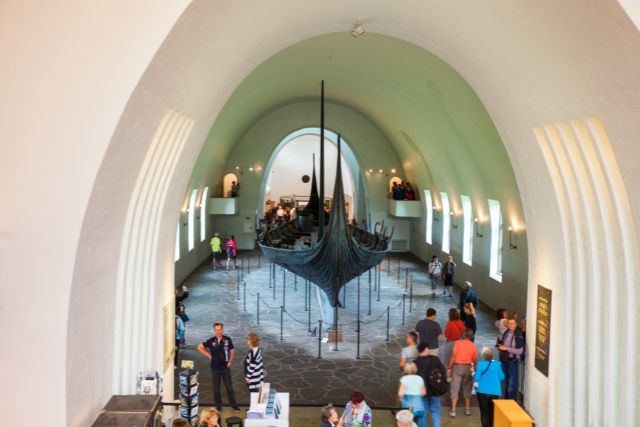

Museums and Exhibits
Today, many reconstructed Viking ships and original artifacts can be found in museums worldwide, allowing the public to connect with this aspect of Viking history. These exhibits play a crucial role in preserving and sharing the legacy of Viking shipbuilding.
Conclusion
This article has explored the various facets of Viking shipbuilding, from the design and construction to the cultural significance of these iconic vessels.
The Vikings’ mastery over shipbuilding has left a lasting legacy, providing us with insights into their lives, society, and seafaring prowess.
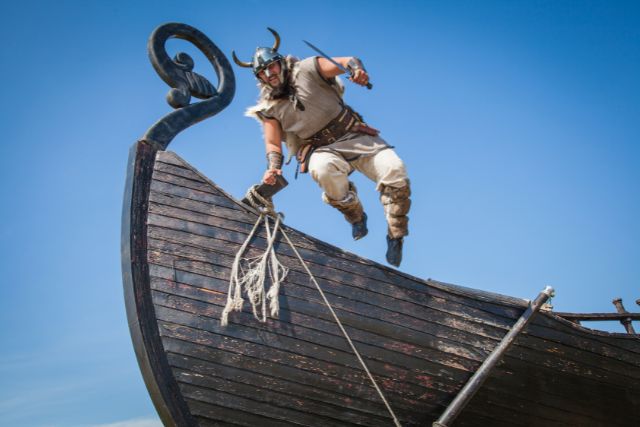

Summary of Viking Shipbuilding
Viking shipbuilding was a complex and highly developed craft, integral to the Vikings’ way of life and success.
From the design and construction to the materials and tools used, every aspect of Viking shipbuilding reflects their practicality, craftsmanship, and deep connection to the sea.
Impact on Modern Boatbuilding and Culture
The legacy of Viking shipbuilding continues to influence modern boatbuilding and remains a fascinating aspect of maritime history.
The craftsmanship, design, and cultural significance of Viking ships continue to captivate and inspire, bridging the gap between the past and the present.

